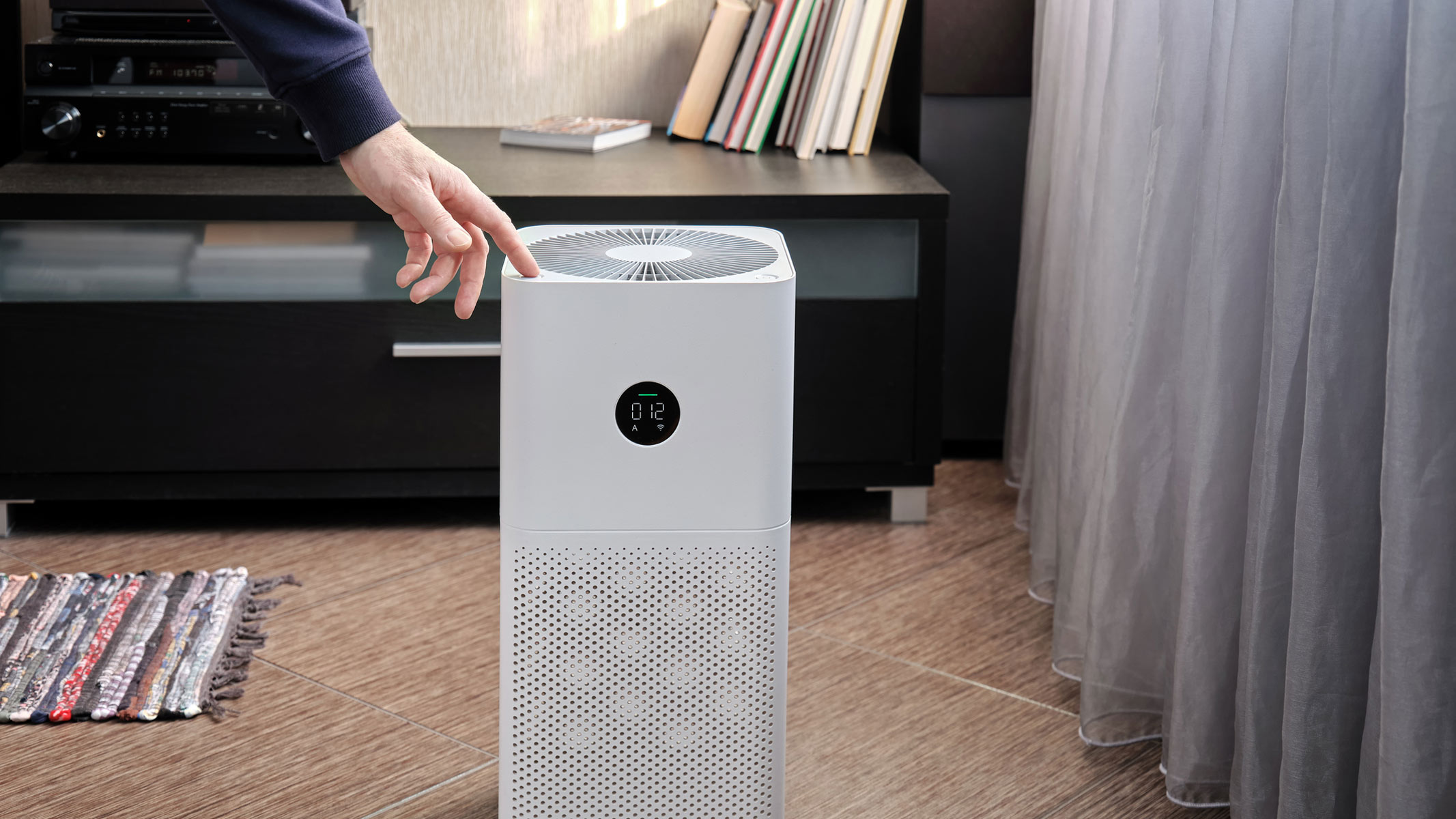Best cameras for wildlife photography 2025
The best cameras for wildlife photography are fast, durable and have accurate autofocus for tracking slow and fast-moving animals — explore our top picks.
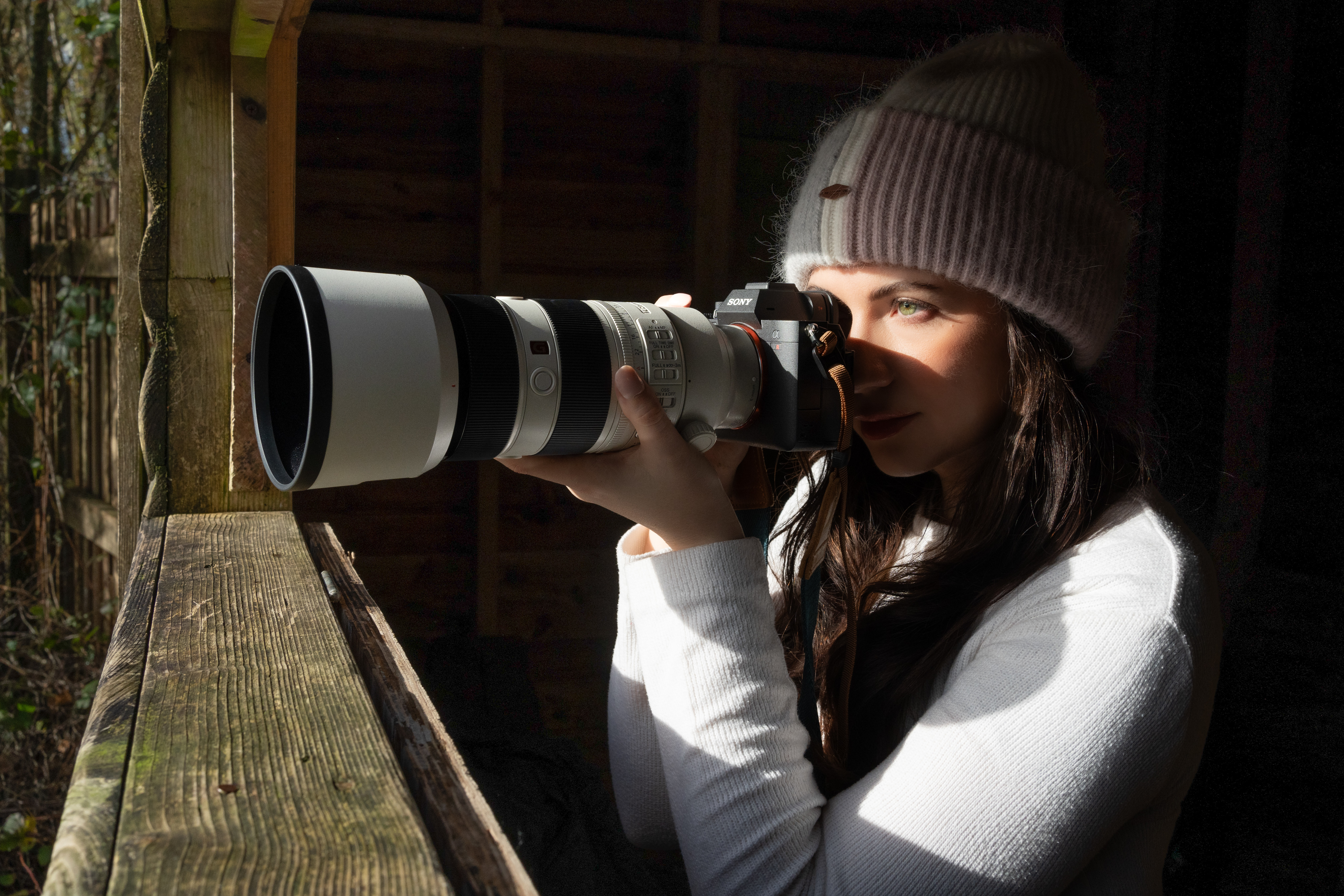
The best cameras for wildlife photography won't turn you into an award-winning photographer overnight, but they are an essential part of this genre and can get you well on your way to becoming one. Therefore, having a camera made specifically for the job is crucial.
The quick list

Best overall
The Nikon Z8 balances speed, image resolution, processing power and incredible autofocus to bring you an all-in-one solution for stunning wildlife photography.

Best resolution
What it lacks in speed, it more than makes up for with accurate and reliable AI-powered autofocus that sticks to subjects like glue to produce stunningly sharp 61MP images.

Best hybrid
A fantastic camera at the top of its game that excels at both stills and video, it's a perfect choice for those who want to shoot multiple disciplines.

Best for beginners
With an impressive burst rate and wildlife-friendly features, the Canon EOS R8 is a fantastic option for beginners or anyone making the jump to a full-frame system.

Best for pros
The Sony A1 II is a serious imaging machine reserved for professionals with a generous budget, but the investment more than pays off with what this camera is capable of.

Best DSLR
Well-known for being the best DSLR ever made, the Nikon D850 can handle anything you throw at it, but it is starting to show its age.
The arrival of spring sees the start of new life in the natural world, providing many opportunities to spot wildlife in April. Bears will start to emerge from their dens in search of food in Yellowstone, and you'll be able to spot Orcas and Gray Whales around Monterey Bay. If you're looking a little closer to home, your backyard is a great place to see butterflies, bees and birds this spring.
To go a step further, having a pair of the best binoculars would also be incredibly beneficial for wildlife photography so you can observe your target more closely. Many wildlife cameras can also take good astro images, though the best astrophotography cameras perform better at night. For long wildlife observation sessions, the best power banks can keep your kit charged for longer.
The best cameras for wildlife photography we recommend in 2025
Why you can trust Live Science
Best camera for wildlife photography overall



Specifications
Reasons to buy
Reasons to avoid
✅ You shoot stills and video: With 8K video and no recording limits or overheating issues, it excels at video as well as stills.
✅ You need a very high burst rate: The Z8 is capable of 120 FPS (albeit at 11MP) for anyone needing blisteringly fast shooting speeds.
❌ You want something lightweight and portable: It definitely looks and feels like a professional camera with quite a bit of heft to it.
❌ You're a beginner: The Z8 is pretty much completely reserved for the pros and enthusiasts with deep pockets — not to mention it would be overkill for anyone new to the hobby. The Canon EOS R8 is much better suited to beginners.
🔎 Nikon Z8: The Z8 is a technological marvel. With all the gusto and performance of Nikon's flagship Z9, but in a more compact and affordable body, the Nikon Z8 is a market-leading mirrorless camera. ★★★★½
When it comes to finding the perfect combination of detailed images, fast burst rate, good handling and accurate autofocus that meets the needs of the best wildlife photographers, we think the prize for the best camera for wildlife photography overall would have to go to the Nikon Z8.
Design: The Nikon Z8 is the first flagship camera from Nikon that doesn't have an in-built vertical grip, meaning it has much less of the weight and bulk of many of their other pro-level cameras, like the Z9. This opens it up to a much broader market, including wildlife photography, as the Z8 is much more pleasant to use handheld for longer periods. We thought the ergonomics were fantastic, with all the buttons being in easy reach where our fingers would naturally want to rest.
Performance: The 45.7MP sensor produces stunningly detailed images, even in low light. Thanks to its stacked sensor, it has better light-gathering ability and a faster readout speed to allow for faster shooting with less noise and more detail.
We used it to shoot wildlife during our Nikon Z8 review, and we were mightily impressed with the autofocus. While it wasn't perfect and there were times when it faltered, (although, not many), overall it's incredibly reliable and it finds, follows and focuses on moving subjects with insane accuracy. They've also now added a bird mode in their latest 2.0 firmware update — great news for bird photographers.



Functionality: You want a fast burst rate, too? You got it. While it can shoot at 120 FPS, the major caveat here is that those images are only 11MP, and in practicality, who is going to want to wade through hundreds of frames of basically the same image to find 'the one'? On a more realistic level, you can get 60 FPS with blackout between exposures, 30 FPS without blackout (although these are small JPEGs). For blackout-free RAW images, you'll have up to 20 FPS, which, for our money, is absolutely fine for the majority of wildlife shooters.
It's also fantastic for video, too. It can shoot up to 90 minutes of 8K 30p or 120 minutes of 4K 60p, which is leaps and bounds better than the overheating limitations of the Canon EOS R5. The tilt-only screen does limit its usability somewhat if you can't see the screen when shooting at certain angles, but it's not a dealbreaker.
- Read our full Nikon Z8 review
Attributes | Notes |
|---|---|
Design | Sublime ergonomics, but we'd like a fully articulating screen. |
Performance | Superbly detailed images and high resolution video. |
Functionality | Capable of 120 FPS... if you'd ever need it. |
Best resolution for wildlife photography


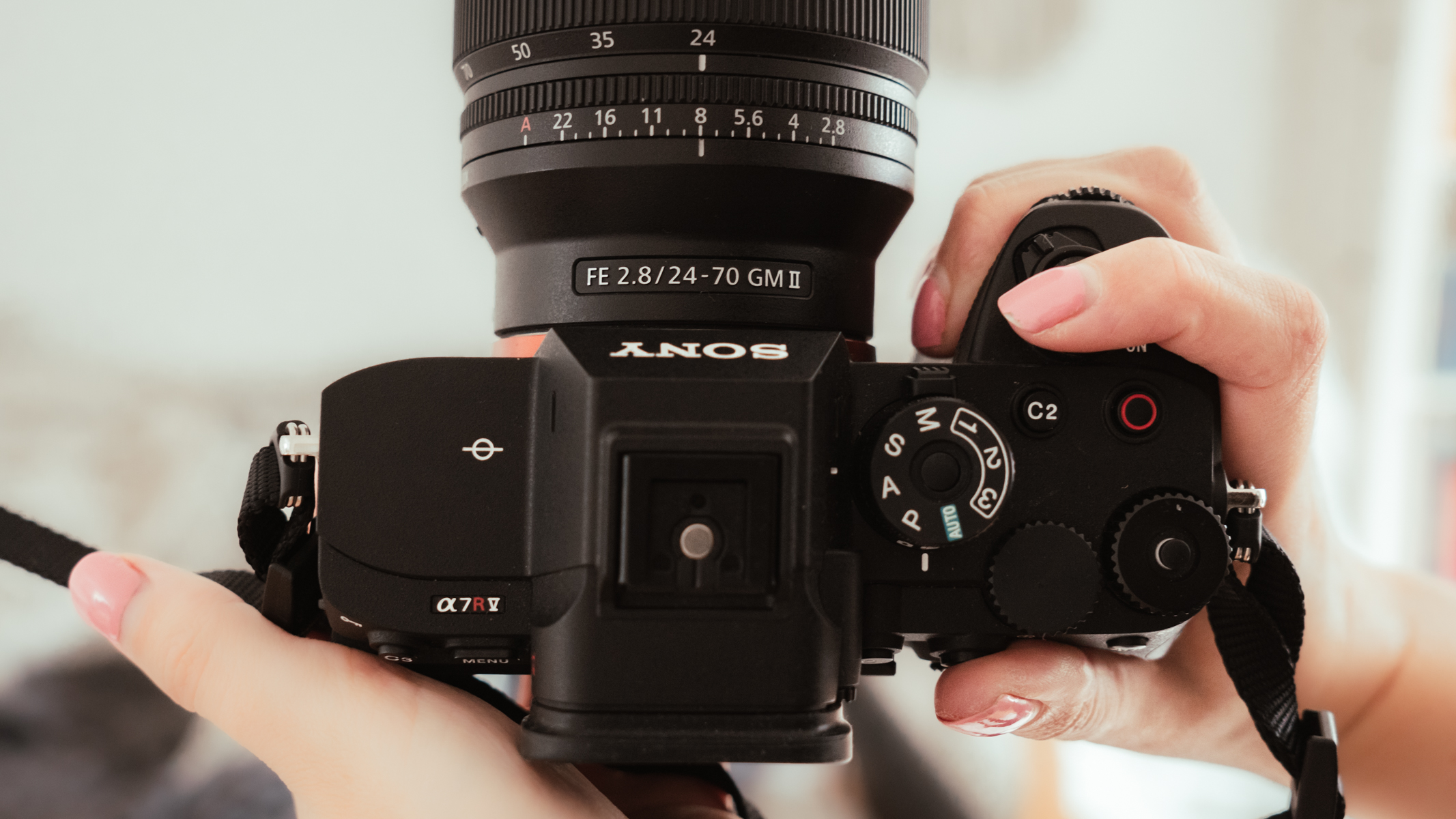

Sony A7R V
Our expert review:
Specifications
Reasons to buy
Reasons to avoid
✅ You want high resolution: The 61MP produces stunningly detailed images.
✅ You need reliable autofocus: The AI autofocus detects and sticks to subjects like glue.
❌ You want sheer speed: The A7R V has the slowest burst rate on this list, so if you need speed, go for another model.
❌ You want to crank the ISO up: It can handle decent ISOs, but the 61MP sensor does introduce more noise than less detailed sensors. If you need to shoot in low light, we'd recommend the Nikon Z8.
🔎 Sony A7R V: For sheer autofocus accuracy and image resolution, it's a no-brainer. It's not the fastest option for wildlife, but if you don't need blisteringly high burst rates, you can't go wrong. ★★★★½
Design: One fantastic design feature of the A7R V is the articulating screen that would make a gymnast jealous. Most cameras either employ a tilt-only or flip-out screen, but the A7R V somehow has both, which is great for when you need to shoot at awkward angles.
Performance: One of its main selling points, and the area where the Sony A7R V wins out against most is its resolution. The whopping 61MP sensor captures breathtakingly detailed images, but it's worth keeping in mind that this also means very large files. We are currently putting the Sony A7R V through its paces for our full review, and the images we've taken are bright, sharp and true to life — we are blown away every time. The only camera that would rival it is the Sony A1 or newly released A1 II, which both have a slightly lower 50MP resolution, however, the new A1 II specifically has better wildlife capabilities.
If it's accurate autofocus you want, then look no further. With AI technology capable of predicting a subject's movements and even tracking their eyes when your subject isn't even looking at the camera, it's the best autofocus on the market right now bar none. It can detect any animal you point it at, and it even has a dedicated insect mode if you want to use it for macro wildlife photography.


Functionality: But we must address the elephant in the room — the burst rate is a tad on the slow side. It's capped at 7 FPS for RAW files and 10 FPS for JPEG images, which is the slowest on this list by a considerable margin, especially for such a new and capable camera. There is an argument to be made that you don't necessarily need a blisteringly fast burst rate due to the autofocus being so good that you will nail more of your shots by default, but this may not be the case if you want to shoot fast-moving animals. That said, we took it to a wildlife reserve and could easily photograph birds in flight without needing a faster burst rate. The newly released Sony A1 II has solved this problem by improving the burst rate to 30FPS for lossy compressed RAW and lossless compressed RAW at 20FPS — but it's over double the price of the A7R V.
- Read the full Sony A7R V review over at our sister site
Attributes | Notes |
|---|---|
Design | Articulating screen is incredible. |
Performance | AI autofocus sticks to subjects like glue. |
Functionality | 7 FPS is slow compared to other wildlife cameras. |
Best hybrid camera for wildlife photography
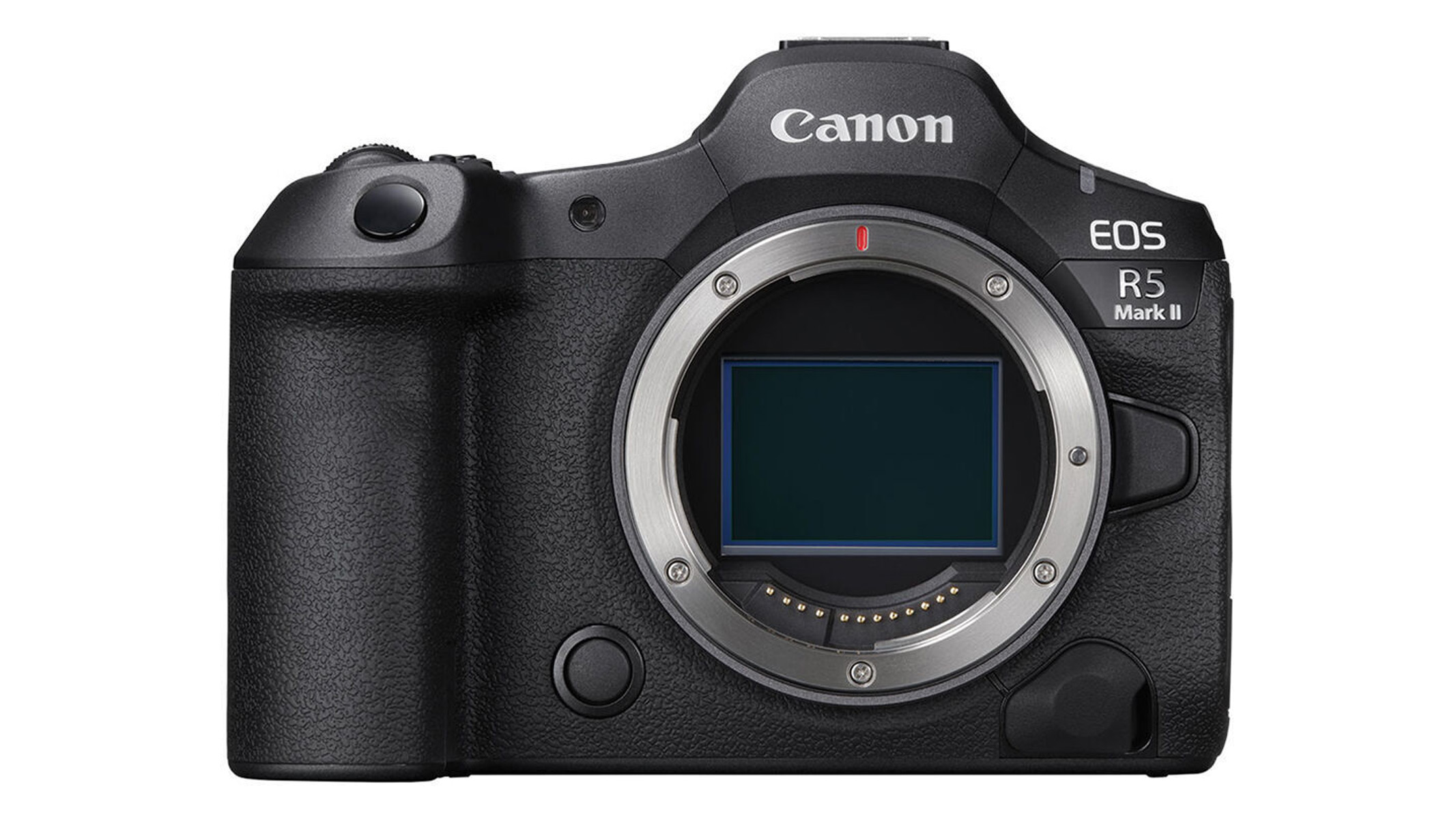
Specifications
Reasons to buy
Reasons to avoid
✅ You want highly detailed images: The R5 Mark II has a 45MP sensor for stunningly detailed images, even when cropped.
✅ You need a good burst rate: It can shoot 30 FPS blackout-free, which is insane when you consider that each image is 45MP.
❌ You already own the Canon EOS R5: If you already own the R5 or primarily shoot landscapes, there may not be enough worthy upgrades to warrant spending the extra $900.
❌ You're a beginner: If you're just starting out or have a smaller budget, the R5 Mark II will be overkill. We'd recommend the Canon EOS R8 for beginners.
🔎 Canon EOS R5 Mark II: Undoubtedly Canon's hottest product ever, the Canon EOS R5 Mark II is been an absolute powerhouse. Canon is pulling no punches with this camera, and the Eye Control AF makes this camera a serious wildlife contender. ★★★★½
The Canon EOS R5 series of cameras are perhaps some of the most ergonomic cameras we've ever used — every dial and button is exactly where your fingers would want them to be, and it fits in the hand like a glove. Even though the R5 cameras are aimed at more seasoned shooters, they're actually incredibly intuitive and easy to shoot with.
While our money is on Sony when it comes to the best autofocus systems on the market, Canon are not far behind at all, if not almost on par with Sony. In our review of the original Canon EOS R5, there wasn't a single animal it couldn't recognize, track and lock onto. Lions, monkeys, turtles, iguanas, fish, skunks, meerkats, raccoons, sand squirrels, gophers, seals, fennec foxes…if it's got a face and eyes, the R5 will put an AF point on it.
The new Canon EOS R5 Mark II goes a step further, adopting the Eye Control AF from the EOS R3. This means that the camera will detect the user's eye movement through the viewfinder and select an appropriate focus point. Not only does the Mark II now detect subjects with more accuracy, but it's also easier to switch between them without diving into the menus.
One of the biggest upgrades from the R5 to the R5 Mark II is the introduction of a back-illuminated stacked sensor. Even though it's the same 45MP resolution as the original R5, the stacked sensor in the Mark II will give faster readout speeds.
Best of all, it can shoot blackout-free images at up to 30FPS with full face and eye detection — and it can do so silently to avoid frightening your subjects. When you consider that each RAW image is 45MP, that's insanely impressive. If you shoot sports, there's a new 'sports events' autofocus mode which includes, soccer, basketball and volleyball that can detect ball positions and angles of joints.
Not only that, but with Pre Capture, it starts recording images 0.5 seconds before the shutter is fully pressed with pre-continuous stills shooting.
The original R5 was already capable of 8K 30p, but it was known for overheating issues. The Mark II can now record 8K 60p and has a cooling fan to help with any potential overheating.
- Read our review of the original Canon EOS R5
Attributes | Notes |
|---|---|
Design | Compact and lightweight. |
Performance | Incredibly accurate animal eye autofocus. |
Functionality | Up to 30 FPS electronic burst rate. |
Best wildlife camera for beginners

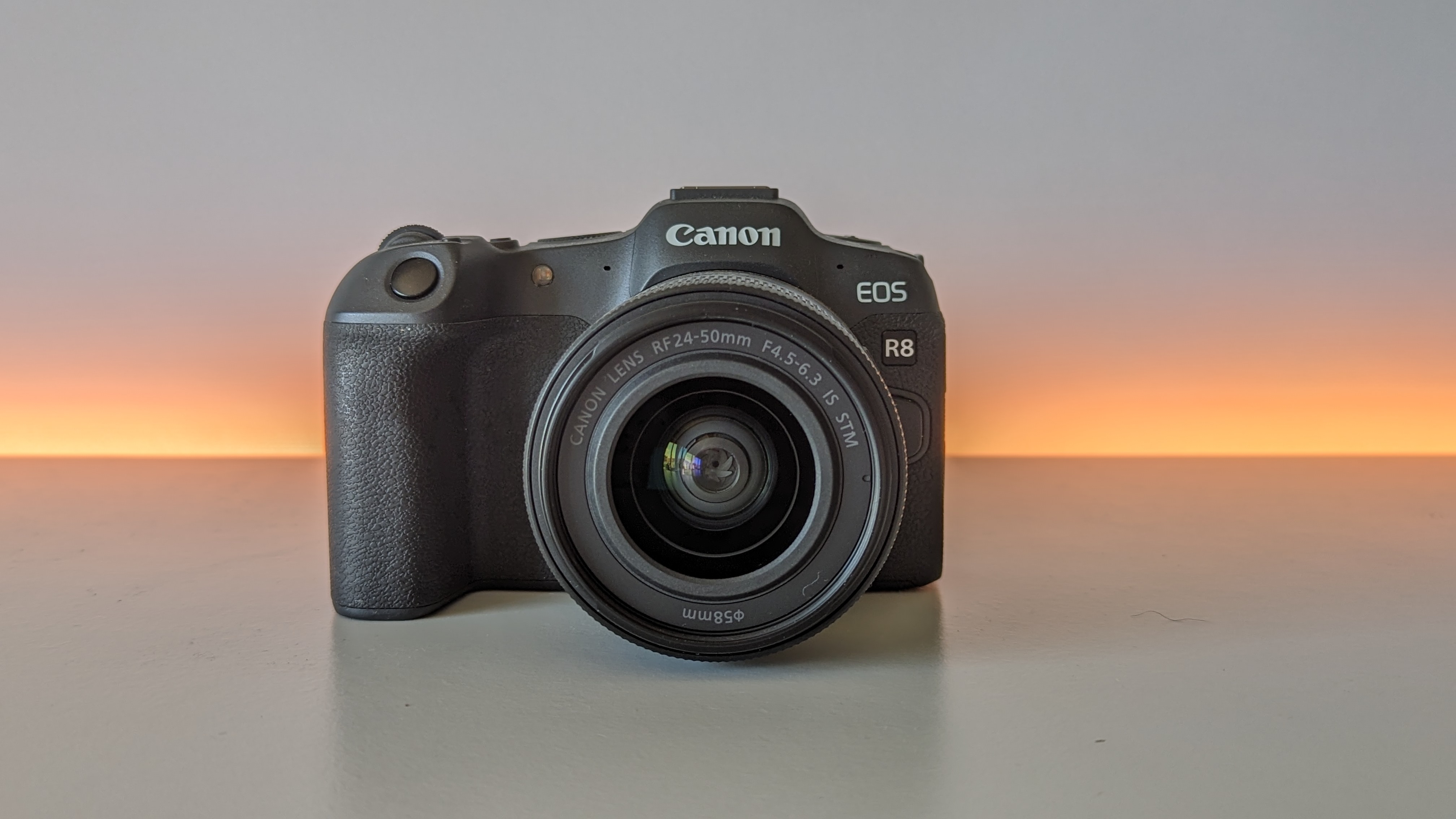

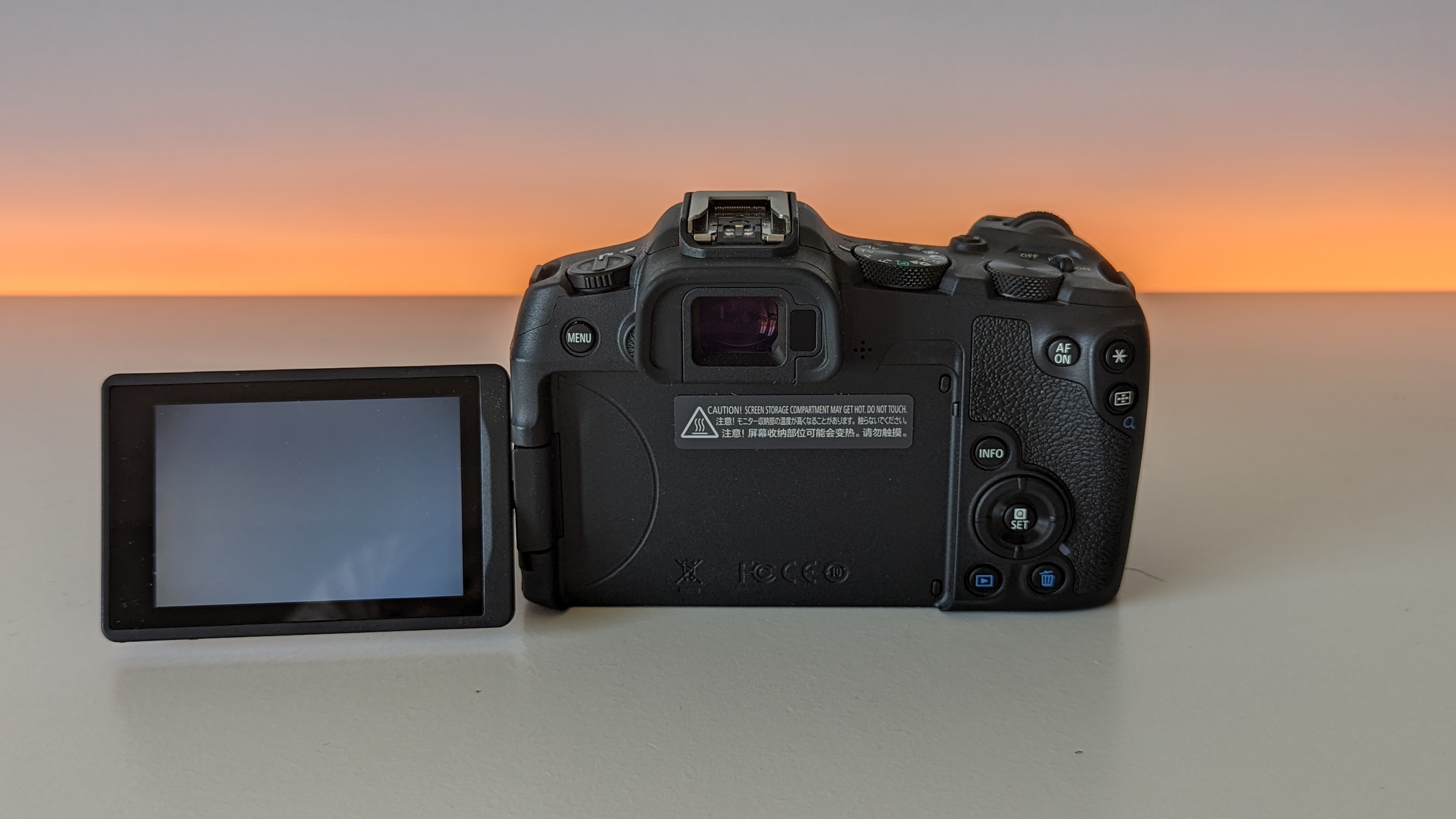

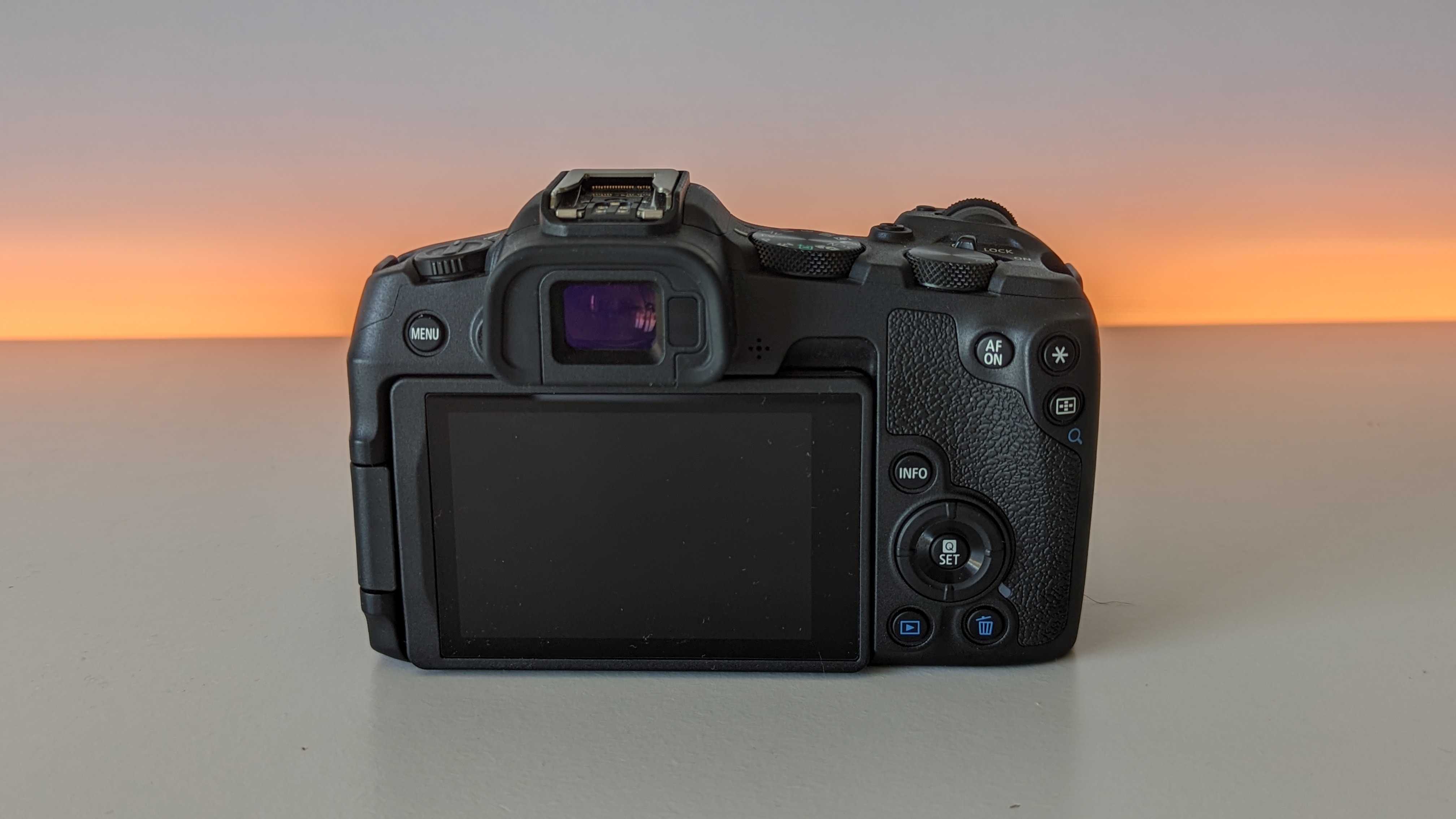
Specifications
Reasons to buy
Reasons to avoid
✅ You're jumping straight into the full-frame market: It's ideal for anyone new to the hobby who wants to go straight to full-frame without being overwhelmed.
✅ You need a fast burst rate: The 6 FPS mechanical leaves a little to be desired, but the 40 FPS electronic burst rate is impressive.
✅ You want to travel with it: It's Canon's lightest mirrorless full-frame body.
❌ You want image stabilization: There's no IBIS for stills, only for video.
❌ You want to use it in all weathers: They state that it's weather resistant, not weather sealed, so be careful about using it in wet or dusty conditions.
🔎 Canon EOS R8: The second most affordable and most lightweight full-frame mirrorless camera from Canon is missing a few features, but it's got impressive specs for the price and provides excellent value for those wanting a step up from their crop-sensor model. ★★★★½
Design: The Canon EOS R8 holds the title of being Canon's lightest full-frame camera body so far. It weighs just 0.91 lbs / 414g so it's ideal for traveling, and in our Canon EOS R8 review we noted that even though it's light as a feather, the grip is deep enough to be comfortable to shoot with for long periods. Long wildlife lenses tend to be fairly heavy and bulky in nature due to their size and focal length, so having a lighter body can be advantageous for shaving a bit of weight off your overall setup.
Performance: During our testing, we thought the autofocus was great. It wasn't the best we've ever used, but we weren't expecting it to be for the price. It has animal eye detection which is ideal for wildlife shooters, although we found it didn't cope particularly well with forward-moving speedy animals, like dogs chasing a ball towards the camera or a bird flying directly toward us. For slower-moving animals though, it'll be great.
We also found it performed surprisingly well in low light, which will be advantageous for astro-shooting, general night-time cityscapes and wildlife shooting at dawn or dusk. It doesn't have image stabilization for stills (only in video), which may be a dealbreaker to some, however, many Canon RF lenses have image stabilization which you can rely on instead. It's also not fully weather sealed, only weather resistant — so you might want to think twice if you want to use it in wet or dusty conditions.
Functionality: The R8 actually has one of the faster burst rates on this list — capable of 40 FPS using the electronic shutter. If you'd rather use the mechanical shutter, it drops quite dramatically down to only 6 FPS, which does leave a little to be desired. It also has RAW burst mode which shoots 30 FPS bursts of RAW images, and there's a pre-shooting option that records images half a second before you fully press the shutter, giving you more leeway if you miss your shot by a hair. The RAW burst mode saves all the shots in the sequence to a single RAW roll, whereas conventional continuous shooting results in each shot being a separate file.
- Read our full Canon EOS R8 review
Attributes | Notes |
|---|---|
Design | Canon's most lightweight full-frame camera. |
Performance | Animal autofocus fine for most, struggled with forward-moving fast paced animals. |
Functionality | 40 FPS electronic shooting fantastic for wildlife. |
Best professional camera for wildlife photography

Sony A1 II
Our expert review:
Specifications
Reasons to buy
Reasons to avoid
✅ You want the Sony A7R V, but faster: While there are other differences aside from the burst rate, the faster speeds of the A1 II make it more attractive for wildlife photography.
✅ You want Pre Capture: To capture those key moments you're not anticipating, Pre Capture shooting can make a world of different for wildlife photography.
❌ You aren't a professional: This is one of the most expensive cameras you can buy, so we'd only recommend it for users who are going to get the most bang for their buck.
❌ You already own one of its competitors: With a price tag of $2,000 more than the likes of the Nikon Z8 and the Canon EOS R5 II (which also has pre capture), consider whether the extra features are worth it to you.
🔎 Sony A1 II: With Pre Capture, a burst rate of up to 30FPS and improved autofocus, the newly released Sony A1 II is hard to beat for professional wildlife photography. ★★★★½
The Sony A1 II features the AI-powered autofocus of the newer generations, like the Sony A7R V, which the original A1 didn't have. It can recognize a wider range of subjects than its predecessor, adding an insect mode alongside the existing animal and bird modes. It's also Sony's first camera to have an auto subject recognition mode, where they claim it can detect what kind of subject you're shooting and switch modes accordingly.
With Pre Capture, the camera starts recording as soon as you press the shutter halfway, helping you capture specific moments before you anticipate them — a very useful feature for wildlife photography with unpredictable animals. The camera temporarily saves the pre-capture images in the buffer, then once the shutter button is fully pressed, the pre-capture images are saved to the card alongside the actual photo. While this is undoubtedly a useful feature, seasoned pros will be much more versed in predicting an animal's movement and behavior, so perhaps they may not need this feature as much as beginners and amateurs would.
While the body is largely the same as the original A1, a few tweaks have been made to improve its performance and handling. The grip is a little deeper, and the photo/video/S&Q modes have been moved to a sub-dial underneath the main mode dial. The LCD screen now has the versatility of the A7R V, with the ability to tilt up and down as well as flip out and fully articulate independently — something we really wished the original Sony A1 had when we reviewed it. There's also now a drive select option to disable the drive mode dial, giving you the ability to control the drive mode solely through the menu.
Considering the A1 II shoots 50MP files on its stacked CMOS sensor, the maximum burst rate of 30FPS is impressive and very attractive to wildlife photographers. However, the caveat here is that you'll only get 30FPS in the lossy compressed RAW format — if you want lossless compressed RAW, you'll get 20FPS — which is still great for wildlife photography. There's also a new C5 custom button on the front of the body next to the lens, which as default, acts as a 'Speed Boost' button, which will speed up your burst rate for a few seconds.
The Canon EOS R3 used to sit on this list, which is still a fantastic pro-level camera at a cheaper price than the A1 II. But looking at them side by side, for wildlife photography, we'd choose the Sony A1 II for its lighter weight and smaller body, higher resolution, Pre Capture shooting and improved EVF resolution.
- Read our review of the original Sony A1
Attributes | Notes |
|---|---|
Design | One of Sony's heaviest models, but comfortable to use. |
Performance | Stunning 50MP resolution coupled with up to 30FPS speeds. |
Functionality | Pre Capture starts recording images with the shutter half-pressed. |
Best DSLR camera for wildlife photography

Specifications
Reasons to buy
Reasons to avoid
✅ You're already invested in Nikon DSLR lenses: If you already have a good arsenal of Nikon DSLR lenses, the D850 is the best camera body you can buy to go with it.
✅ You're an advanced user: If you need a serious bit of kit that can do anything and everything, the D850 is what you're looking for.
❌ You're a beginner: It's overkill and expensive for beginners— try the Canon EOS R8 instead.
❌ You want a future-proof investment: DSLR cameras and lenses aren't being produced at the rate they used to be — try the Nikon Z8.
🔎 Nikon D850: Speed or resolution? Why not have both? The Nikon D850 has a massive pixel count, near pro-level burst mode, alongside uncropped 4K video — impressive for a DSLR. Its 45.7MP stills are sharp and detailed, giving you breathtaking image quality. ★★★★½
Not only is the D850 Nikon's best DSLR, but it's also the best all-round DSLR period. With its ultimate full-frame image quality combined with fast (though not lightning-fast) speed, this full-frame camera is the tool of choice for many advanced amateurs and professionals alike, as we mentioned in our full Nikon D850 review.
Design: We thought the Nikon D850 was sturdy and well-built and could certainly handle a lot of punishment with its full weather-sealing and metal construction.
We thought the touch ability on the screen was limited. You can activate the shutter and set focus, but you can't navigate through the menus by pressing the screen, which we thought was a little odd. It does, however, have illuminated buttons, which is great if you're photographing wildlife at dawn or dusk and can't quite see the camera properly.
Performance: Its 45.7MP resolution enables you to capture shots in jaw-dropping detail or to crop into your images and fill the frame if your lenses haven't quite got enough reach. The pixel-dense sensor also gives you full-frame 4K video, though sadly shooting in live view (whether for stills or video) means that you lose the fantastic phase detect autofocus and are instead stuck with subpar contrast-detect.




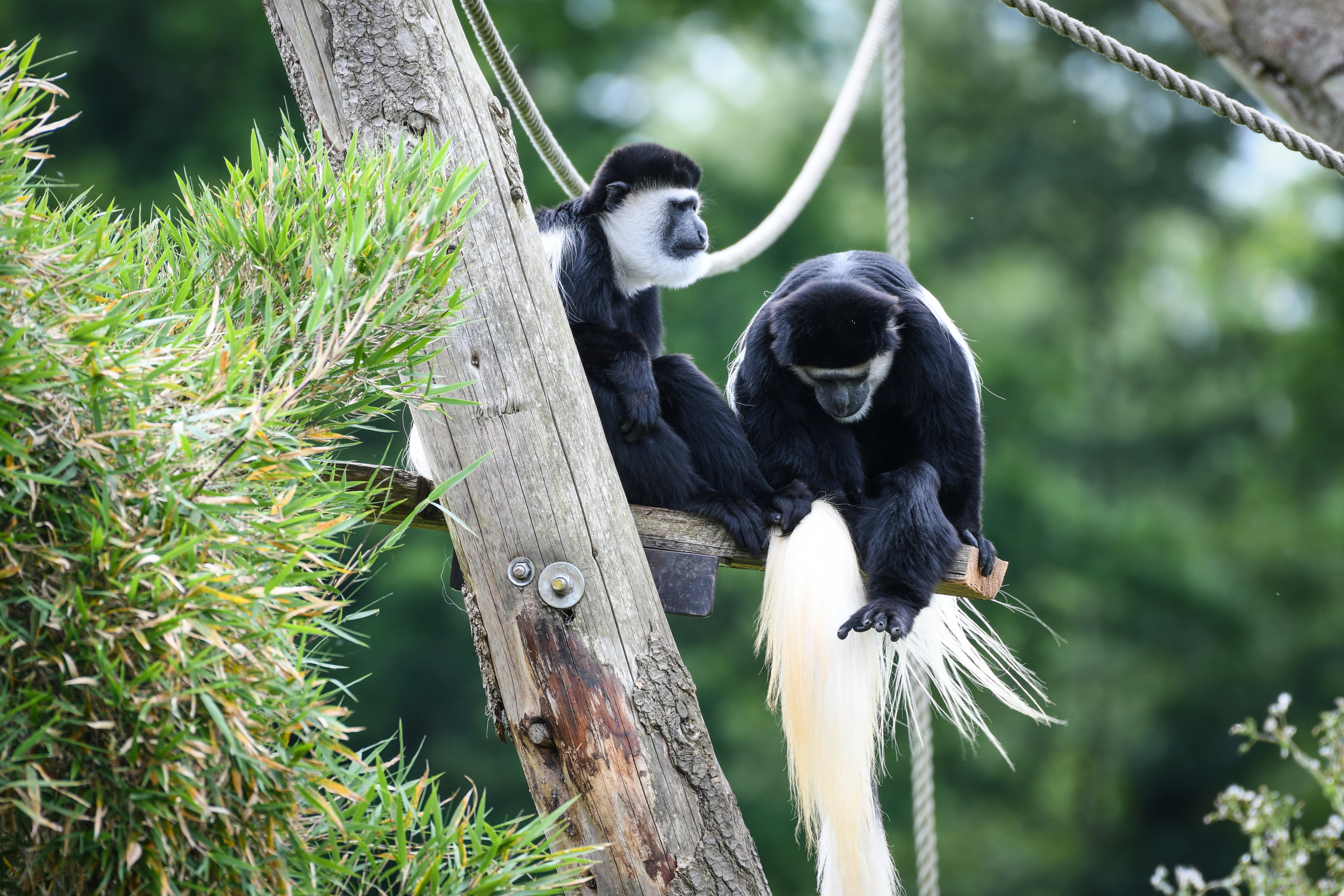


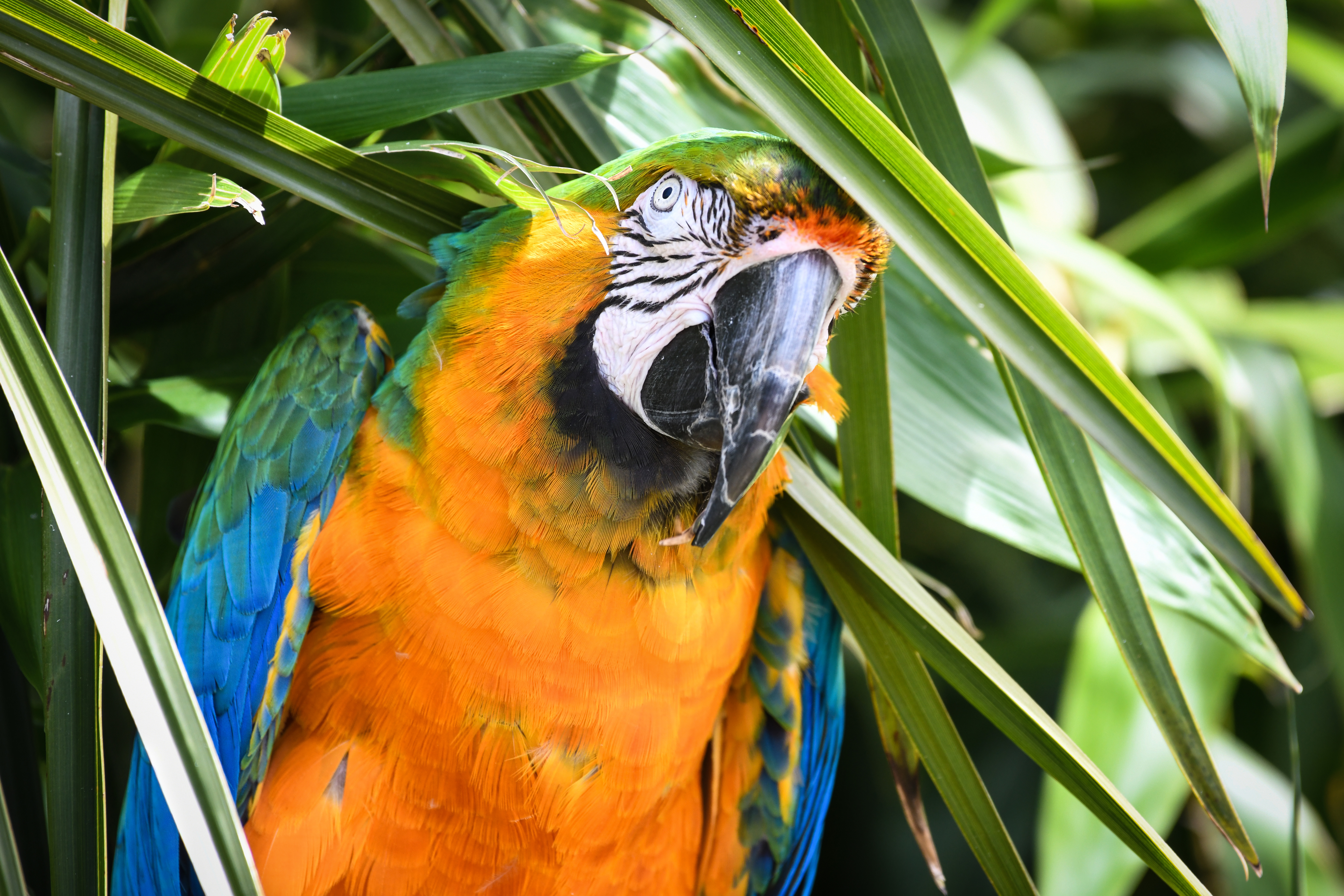



Functionality: The 7 FPS burst rate is the joint slowest of all cameras on this list (being the same as that of the Nikon P1000), but it can be boosted to 9 FPS if you attach the battery pack. That adds to the already significant cost of this camera, but if you're looking for the most complete DSLR then the D850 is your best bet. Still, when you consider that each image is 45.7MP, that's a pretty decent burst rate for the majority of wildlife photography situations. Besides, the buffer capacity is pretty generous at 200 shots, so you shouldn't run into any issues with shooting speed.
Another useful trick the D850 has up its sleeve is fully electronic silent shooting — this is endlessly useful for wildlife photography, particularly if you're out shooting at dawn or dusk and you don't want the sound of the camera shutter to scare the wildlife away.
- Read our full Nikon D850 review
Attributes | Notes |
|---|---|
Design | Fantastic build quality, and illuminated buttons help to see in the dark. |
Performance | Accurate autofocus and great battery life. |
Functionality | Between 7-9 FPS and silent electronic shooting. |
Best APS-C camera for wildlife photography






Specifications
Reasons to buy
Reasons to avoid
✅ You're a beginner: It's a fantastic beginner camera that won't break the bank.
✅ You want a compact, lightweight camera: The R7 weighs 612g/1.35 lbs (including the battery), so is great for travel.
❌ You want full-frame: If you want a bigger sensor, try the Canon EOS R8 or Canon EOS R5 Mark II.
❌ You want more on-body controls: To change all your settings independently, you'll likely want a full-frame camera.
🔎 Canon EOS R7: It has both speed and resolution, alongside image stabilization and a 1.6x crop-factor to boost your focal length and get closer to wildlife. ★★★★★
Boasting a 32.5MP sensor and up to 30FPS burst rates, the Canon EOS R7 is a wildlife powerhouse in a small package. Don't let the APS-C sensor put you off, this camera can hold its own with full-frame models, and some users may prefer its compact and lightweight frame — particularly when it comes to traveling and carrying your camera equipment on your back to remote locations.
The 15FPS mechanical rate in the R7 is actually faster than the 12FPS of the at-the-time flagship Canon EOS R3, with both cameras capable of 30FPS using the electronic shutter. With the recent release of the Canon EOS R1, the R7 still has it beat on mechanical shutter (15FPS vs 12FPS), but the R1 has been blessed with up to 40FPS using the electronic shutter. Still, for the price difference, we're more than happy with the R7's 30FPS.
We mentioned in our Canon EOS R7 review that we were impressed by its incredibly powerful sensor, and it's also capable of capturing stunning (and uncropped) 4K video footage. The image stabilization is boosted up to 8 stops when paired with an IS lens, and the 1.6x crop factor of APS-C cameras means that when paired with a full-frame lens, your image seems a lot more zoomed in — potentially a very useful feature for wildlife photography.

It has some of the best autofocus and subject tracking in the business, and features the same flagship-level Dual Pixel AF II system that's found in both the R3 and R5. You get incredible eye, face, head and body detection whether you're shooting people or animals, and it can easily detect subtle differences, like if your subject is wearing goggles, for example.
While it has impressive speed in terms of burst rate, the buffer capacity and card compatibility does stunt this somewhat. It can rattle off bursts of 30FPS, but the buffer depth is only 51 RAW files and it isn't compatible with faster CFExpress cards like the bigger models are. That said, this camera is aimed at a more beginner/intermediate market, who will likely be thankful they don't have to shell out for expensive cards.
- Read our full Canon EOS R7 review
Attributes | Notes |
|---|---|
Design | Small and compact form. |
Performance | Accurate tracking and autofocus. |
Functionality | 30FPS burst rate is fantastic for wildlife photography. |
Best Micro Four-Thirds camera for wildlife photography




Specifications
Reasons to buy
Reasons to avoid
✅ You struggle with timing: Pro Capture mode records images before and after you press the shutter button, so no more missing the shot.
✅ You need exceptional weather-sealing: It provides industry-leading dust, splash and freeze-proofing to shoot in any and all weathers.
❌ You want full-frame: For professionals wanting a full-frame sensor with higher resolution, you'll want to consider other brands. The Sony A1 II is the best on this list for pros.
❌ You want to shoot at dawn/dusk: The reduced sensor footprint means it's not the most capable for low light shooting at dawn or dusk without ramping up the noise. The Sony A7R V's image stabilization enables you to shoot handheld at slower shutter speeds in low light.
🔎 OM System OM-1 Mark II: With an insane burst rate, animal eye autofocus and Pro Capture, the OM-1 Mark II is a compact champion for wildlife photography. ★★★★½
Design: Micro Four Thirds cameras may not be your first thought when considering a wildlife camera, but there are many good reasons to look at the OM-1 Mark II. For starters, its smaller sensor means that lenses are much smaller, lighter and less expensive — meaning you have a smaller and lighter load to carry.
We found it comfortable to shoot for long periods even when using long lenses, although we'd have liked to have three dials on the body to change all the exposure settings, rather than just two dials and a separate ISO button. But with the 8.5 stops of image stabilization, you can shoot tock-solid stills and video handheld, without a tripod.
Performance: The 20.4MP sensor may sound unimpressive at first, especially when compared to the other models in this list, but we actually found that it's more than enough for most purposes. However, it has a neat trick up its sleeve called High Res Shot mode, where it can boost the resolution to 50MP handheld or 80MP when mounted on a tripod. However, both these resolutions take a few seconds to expose, so they'd only be suitable for still subjects. Still, all the images in our review were shot at the native 20.4MP resolution, and we think they were plenty good enough.
We took the OM-1 Mark II to a nature reserve during our review and found the autofocus and tracking were pretty solid. We'd have liked for there to be a dedicated insect mode, but bird mode worked well enough for photographing close-up shots of dragonflies and some bees buzzing around a flower field.
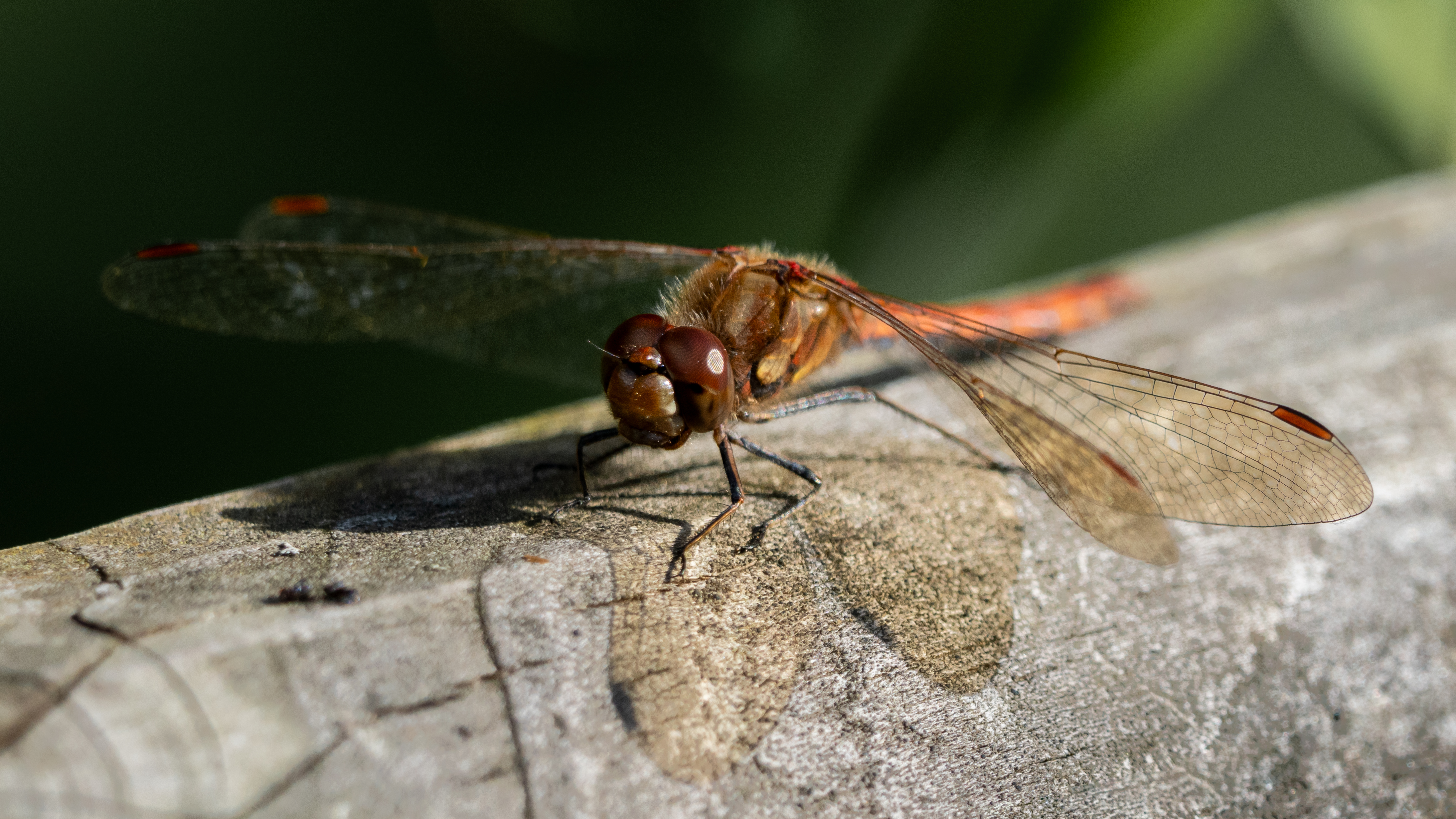





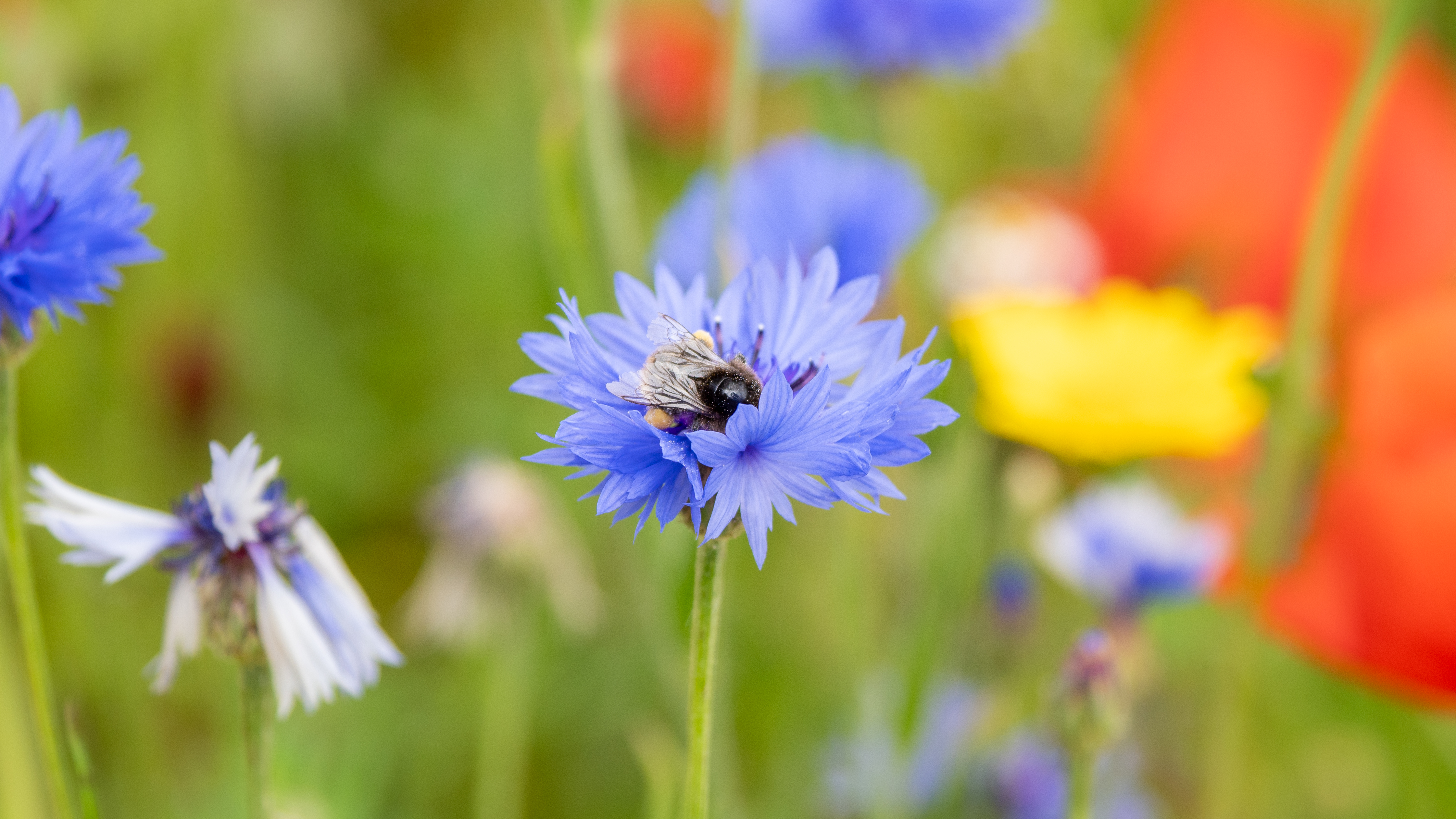
The Olympus OM-D E-M1X used to sit on this list, and it's still an incredible wildlife camera, but with the OM-1 Mark II's higher burst rate, the inclusion of animal eye af, higher LCD and EVF resolution, smaller and lighter form alongside its stacked sensor means the newer OM-1 Mark II has the edge when it comes to wildlife photography.
Functionality: The camera shoots a frankly ridiculous 120 FPS blackout-free with focus locked off, or a still-impressive 50 FPS with full AF/AE tracking. Its best trick for wildlife shooters, however, is Pro Capture; this starts buffering shots when you half-press the shutter, meaning that even if you're a fraction too late with your trigger finger, you've got the 15 frames before you fully depressed the shutter — meaning you never miss a shot, even when you miss it.
- Read our full OM System OM-1 Mark II review
Attributes | Notes |
|---|---|
Design | Industry leading weather-sealing. |
Performance | Pro Capture mode captures images before and after you press the shutter. |
Functionality | Insane 120 FPS burst rate. |
Best bridge camera for wildlife photography

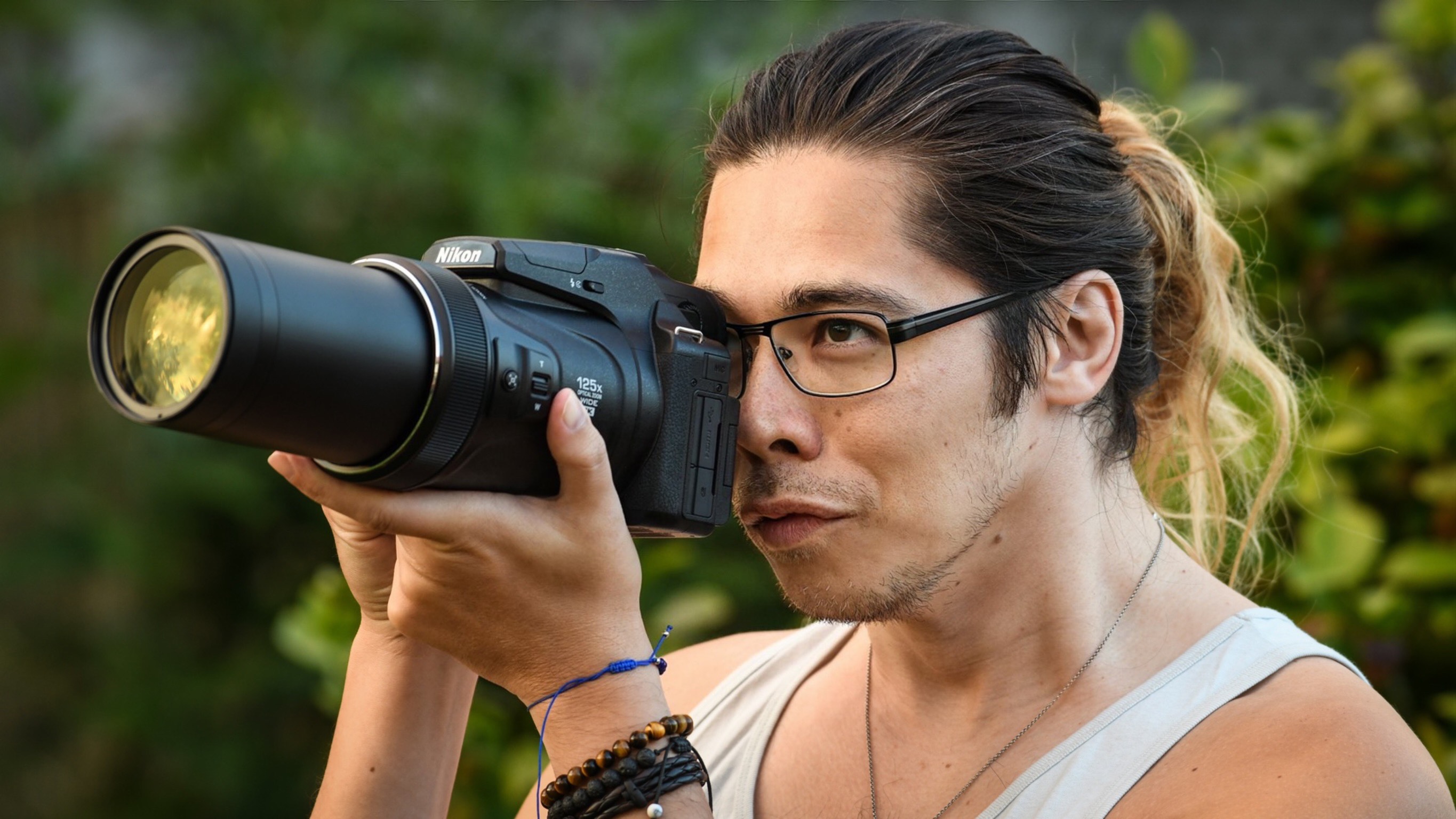
Specifications
Reasons to buy
Reasons to avoid
✅ You want an all-purpose camera: It would struggle for wide-angle or astro shooting, but it can handle pretty much everything else you throw at it.
✅ You're a beginner: It has automatic and semi-automatic modes to aid beginners who want to point and shoot at any subject.
❌ You want high-quality images: With a sensor this small, you aren't going to get DSLR or mirrorless level performance. The Sony A7R V has the highest Megapixel count in this guide.
❌ You want to shoot in all weathers: It isn't weather-sealed, so you'd need to be careful in adverse weather.
🔎 Nikon Coolpix P1000: The Nikon Coolpix P1000’s 125x zoom can shoot just about anything you want — animals, buildings or even the moon from miles away. Want the ultimate zoom bridge camera? Here it is. ★★★★½
If you're a newcomer to photography, and especially wildlife, one of the best ways to get started is with a bridge camera. These combine the handling of a DSLR, the convenience and ease of a compact camera, and the range of a superzoom lens.
Design: This camera is an all-in-one package that gives you a greater zoom range than you could achieve with a DSLR or mirrorless camera setup that costs thousands — but the tradeoff is image quality, as bridge cameras use much smaller image sensors, and the AF systems aren't as advanced as more expensive cameras.
Even though we described it as being 'built like a tank', it's actually surprisingly compact for what it can offer. And it isn't too heavy, either, weighing a lot less than a DSLR and we found it very comfortable to hold.
Performance: The Nikon Coolpix P1000 is about one thing, and one thing only: range. It offers a frankly absurd 24-3000mm zoom range — to put that into perspective, that's enough to shoot frame-filling shots of the moon, as we mentioned in our Nikon Coolpix P1000 review. This means that whether you're on safari or photographing birds at the local lake, nothing is going to be too far away.




Functionality: For some people, that reach alone makes this camera worthwhile. The compromises, however, are important to consider. Firstly, the P1000 possesses the smallest and lowest resolution image sensor on this list — so image quality and low light performance take a hit. The AF system and continuous shooting speeds aren't designed for fast action, either, so this is a camera best used for photographing still subjects rather than, say, birds in flight.
Still, that reach. It's impossible to achieve that on a DSLR or mirrorless camera, so if all you want is basically a telescope that takes pictures, it's right here.
- Read our full Nikon Coolpix P1000 review
Attributes | Notes |
|---|---|
Design | Surprisingly compact for its size. |
Performance | Impressive images for the sensor size. |
Functionality | Insane zoom range and 7 FPS burst speed. |
Best wildlife cameras: comparison
| Row 0 - Cell 0 | Sensor size | Resolution | Number of autofocus points | Animal AF | Burst rate (Frames Per Second) | Buffer capacity | Image stabilization | Weather sealed | Max video resolution |
Nikon Z8 | Full frame | 45.7 Megapixels | 493 | Yes | 20 FPS RAW, 30 FPS JPEG, 120 FPS 11MP crop | 1000+ shots | Yes | Yes | 8K 60p / 4K 120p |
Sony A7R V | Full frame | 61 Megapixels | 693 phase-detect | Yes | 7 FPS RAW / 10 FPS JPEG | 583 compressed RAW shots | Yes (8 stops) | Yes | 8K 25p / 4K 60p |
Canon EOS R5 Mark II | Full frame | 45 Megapixels | 1,053 | Yes | 30FPS blackout free RAW | 230 RAW frames mechanical shutter / 93 RAW frames electronic shutter | Yes (up to 8.5 stops) | Yes | 8K 60p |
Canon EOS R8 | Full frame | 24.2 Megapixels | 1,053 | Yes | 40 FPS electronic / 6 FPS mechanical | 85 RAW / 1000 JPEG shots | Only in video | Weather resistant, not weather sealed | 4K UHD 60p |
Sony A1 II | Full frame | 50 Megapixels | 759 | Yes | 30 FPS lossy compressed RAW / 20FPS lossless compressed RAW | 240 RAW | 8.5 stops | Yes | 8K/30 |
Nikon D850 | Full frame | 45.7 Megapixels | 153 phase-detect | No | 7 FPS (9 FPS with battery pack) | 200 JPEG, 200 RAW shots | No | Yes | 4K 30p |
Canon EOS R7 | APS-C | 32.5MP | 651 | Yes (and eye af) | 30FPS electronic / 15 mechanical | Up to 51 RAW files in a single 15FPS burst | 6 stops in-body / 8 stops with IS lens | Yes | 4K 60p / FullHD 120p |
OM System OM-1 Mark II | Micro Four-Thirds | 20.4 Megapixels | 1,053 | Yes (animal & bird modes) | 120 FPS fixed • 50 FPS with AF/AE | 213 RAW frames at 120FPS | Yes (up to 8.5 stops) | Yes | 4K 60FPS, Unlimited recording time |
Nikon Coolpix P1000 | 1/2.3-inch | 16 Megapixels | 49 contrast-detect | No | 7 FPS | 7 shots (RAW) | Yes | No | 4K 30p |
Contributing experts
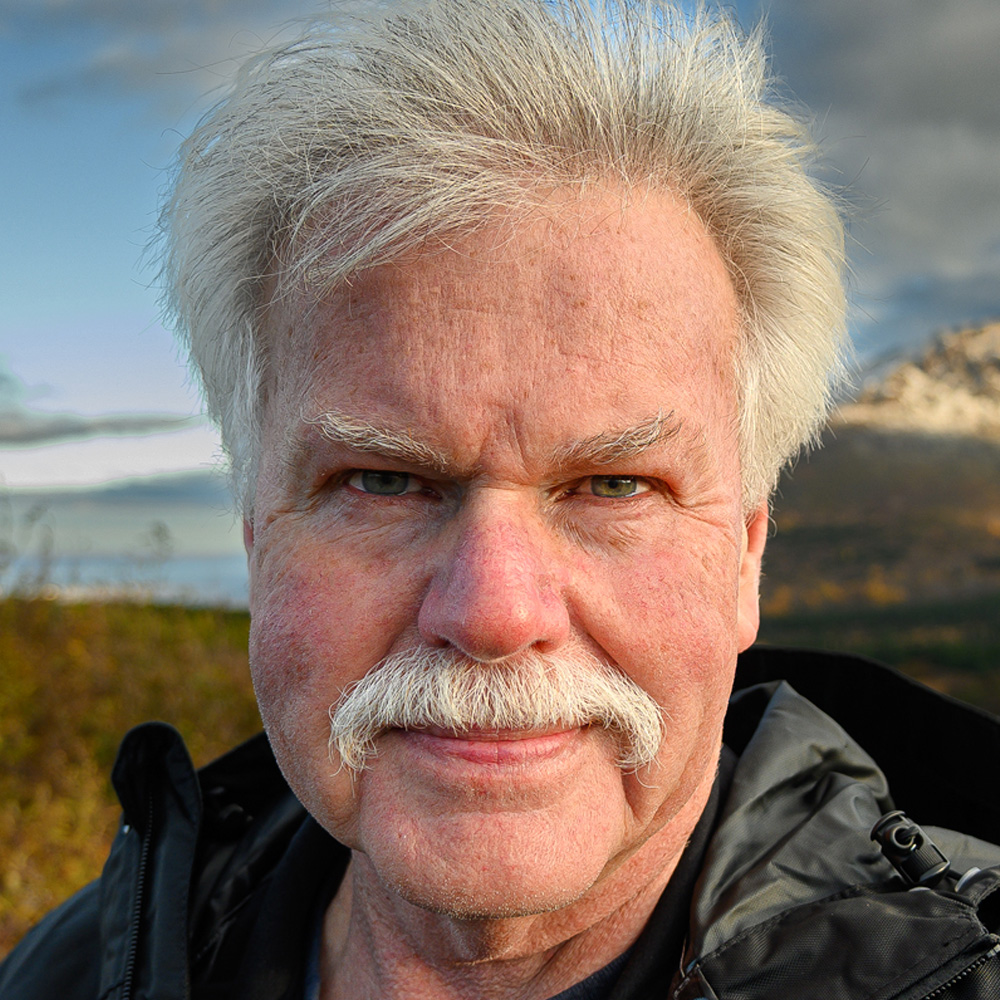
Moose has dedicated his life to the education and protection of our wild heritage through his photography for over 40 years. He is a Nikon USA ambassador, recipient of the John Muir Conservation Award and research associate with the Endangered Species Recovery Project, to name a few. He has written 29 books and been published in over 143 magazines worldwide.

David is an internationally renowned photographer and has been awarded six times in the coveted ‘Wildlife Photographer of the Year’ Awards. He is also the author of two wildlife photography books and has hosted wildlife photo safaris in Kenya, India and Uganda for 12 years.
David has been at the forefront of the international wildlife photography scene for over 15 years, and was a pioneer of black-and-white wildlife photography. A passionate conservationist, he supports charities including The Born Free Foundation which is committed to preventing animal suffering and protecting threatened species in their natural habitats.
Originally from New Zealand, he is now based in London, UK.

Mike Mezeul II is an extreme nature and landscape photographer, as well as Nikon Ambassador, based out of Arvada, Colorado. His work focuses on documenting the power and beauty within the world’s most powerful natural events, focusing primarily on severe weather and volcanoes. When he is not on a project, he spends his time leading workshops around the world in which he shares his passion for photography through inspiring and educating individuals of all ages and skill levels.
Wildlife Photography Cameras: FAQ
What is a wildlife camera?
So what makes the best wildlife cameras different from regular cameras? As noted, they typically offer formidable autofocus that is designed to keep up with the fast-twitch, erratic nature of wild animals.
A standard camera should be able to handle portraits and landscapes with no problem, as this isn't very taxing on the focusing system. Point it at a bird in flight, however, and it will likely struggle to keep the subject in focus. In fact, even very expensive cameras can struggle to focus on animals — or at least, to focus on the part of the animal that you want.
The other key feature of the best wildlife cameras is their ferocious shooting speeds (measured in frames per second, or FPS). Think of a cheetah running at top speed; you need to capture as many photographs as possible to ensure that you get the precise moment you want — and also to make sure that at least some of your shots are in focus.
We asked one of our contributing experts, wildlife photographer and author Moose Peterson, and he said "It is easy to get caught up comparing cameras when thinking wildlife photography. Since critters have been photographed since the dawn of photography, it proves that just about all cameras will do a good job. Personally, the couple of specs I look for is FPS, preferring the fastest I can, battery life and physical weight."
How to get sharp wildlife photos
To get pin-sharp wildlife photos, make sure your shutter speed is fast enough. We mentioned above some good shutter speeds for various types of moving subjects, so make sure you adhere to this rule to avoid blurry photos. We asked award-winning wildlife photographer David Lloyd, who said "By ensuring a shutter speed of 1/1000th of a second and using a smaller aperture to better ensure a sufficient focus depth of field." Another way to get sharp photos is to make sure your camera has accurate autofocus that can locate and track your subjects effectively, and focus on getting the eye sharp. Lloyd said, "Most cameras have auto-focus settings that can be tailored to the kind of photography".
Moose Peterson told Live Science "Getting the eye sharp is a must. One of the best and most consistent ways is to use proper handholding and long lens techniques. Once you learn these, you need to practice them. Personally, I practice my handholding every day. Muscle memory is a good thing in photography."
What shutter speed should I use for wildlife photography?
If you want the best chance of getting sharp images of wildlife, one of the best things you can do is choose an appropriate shutter speed.
If you're looking for a basic rule of thumb for starting out, here's what we'd recommend. For stationary animals, 1/60 - 1/400 will be fine. If the animal is walking, go for 1/500 - 1/1000, or if they're running or hunting you'll want to stop down to around 1/1000 - 1/1500. For large flying birds, somewhere between 1/1600 - 1/2500 should do the trick, depending on if you want to slightly blur the motion of their wings or freeze the action entirely. For smaller, fast birds who tend to move a bit more erratically, go for around 1/2500 - 1/4000. Lloyd told us "For the most part, 1/1000th of a second or less for a general-purpose sharp photo. But for special effects anything down to ½ a second can be used."
We asked contributing expert, Moose Peterson, and he said "There is one magical shutter speed I do think about and that's when birds are eating, in this instance, I won't shoot below 1/125. There is a muscle between the bill and eye that at a slower shutter speed, the eye won't be sharp. And no matter the shutter speed you use, the eye always has to be sharp."
What is the best time of day for wildlife photography?
We asked award-winning wildlife photographer, David Lloyd, who said "At either end of the day when the light is softer and when the animals are usually more active."
Dawn is also a fantastic time to photograph insects. As insects can't produce their own body heat, they rely on the heat from the sun to provide warmth, so they'll be very still first thing in the morning.
What's the best wildlife photography camera for beginners?
We've named the Canon EOS R8 as the best wildlife camera for beginners, thanks to its accurate autofocus, fast burst rate, user-friendly operation, impressive image quality and beginner-friendly price.
Many people think you need to spend hours hiding in a bush or drop thousands of dollars on an African safari to get the best wildlife shots. Expert wildlife photographer Mike Mezeul II told Live Science: "Don't put the pressure on yourself to find a 'perfect' animal to photograph. As a beginner, you're learning and any subject is beneficial. From dogs, cats, birds — they can all be great to learn on and provide different challenges to grow off of."
What focal length is best for wildlife photography?
It depends on how close you can get to your subject. Somewhere between the 100-400mm region is good for most wildlife photography, although you do get lenses that can reach further than 400mm — and each manufacturer produces different focal length options. Zoom lenses tend to be favored for a lot of subjects because you can adjust the focal length as the animal moves, whereas you can't with a prime lens.
We asked award-winning wildlife photographer, David Lloyd, who told us "The default is a long telephoto or zoom to reach 500mm because, for the most part, animals are far away. But all local lengths can be utilized, especially if you wish to capture the environment they live in as well, in which you would use a shorter focal length like 35mm-200mm."
What camera mode is best for wildlife photography?
Professionals and advanced users who can comfortably and quickly change their settings from memory would tend to opt for fully manual shooting to have full control over their aperture, shutter speed and ISO.
However, many photographers (pros included) do often rely on either shutter priority or aperture priority to photograph wildlife. We asked expert wildlife photographer Mike Mezeul II, who said "I prefer to always shoot on manual when possible, but utilizing shutter priority and auto-ISO can be quite beneficial and help take the stress off of managing settings."
Shutter priority would be used for fast moving subjects where you might need to adjust the shutter speed depending on how fast the subject is moving, and Aperture priority would be used on stationary or slow moving subjects to determine the blur of the background to isolate the subject. If you do decide to use aperture priority, make sure you set a minimum shutter value in the menu so your camera doesn't automatically set the shutter speed too slow.
What focus mode should I use for wildlife photography?
Mike Mezeul II told us "Utilizing shooting in continuous high motor drive and having continuous autofocus on are important settings." This means that as long as you're holding the shutter button halfway, the camera will continuously keep the focus on your moving subject until you fully press the shutter.
Canon call it AI Servo AF, Nikon refer to it as Continuous-servo AF (AF-C) and Sony use Continuous AF (AF-C).
What drive mode is recommended for wildlife photography?
You want to be shooting in burst mode where the camera will continuously take photos for as long as the shutter is held down. This is ideal for moving subjects such as wildlife. Some cameras also have a silent shooting mode for burst shooting, which is recommended to prevent the wildlife from being scared away by the noise of the shutter.
The standard setting is single-shot drive mode, so you'll need to go into the menu or program a custom button to change it when you want to photograph wildlife.
What other equipment do you need for wildlife photography?
You will, of course, need a suitable optic — including at least one long telephoto lens, in order to capture distant subjects. We've included a lens recommendation with each camera in this list, but there are a number of fantastic lenses you can pair with each camera.
A versatile all-round wildlife lens would be a 100-400mm zoom, though there are many focal ranges from different manufacturers (such as 200-500mm or 150-600mm). You might think that longer is better, and in many cases it is, but a 600mm lens can cost thousands and thousands — and if a subject gets comfortable and comes closer, you won't be able to photograph it.
Depending on how serious you are about photographing wildlife, the subjects you're shooting and the environments you're shooting in, you might want to invest in anything from a tripod to the best binoculars, a hide to a camouflage or ghillie suit. "A piece of gear overlooked by many wildlife photographers is binoculars, better known simply as, Bins. My Nikon bins are with me all the time permitting me to walk with my eyes at times and other times, see if the subject I have in my sight can be carefully, successfully photographed" Peterson told Live Science.
Finally, for wildlife photography, you need the one thing money can't buy — patience."For me, it is essential to wait, not chase. In other words, patience goes a long way." Lloyd said.
Latest updates
Recent updates
March 25 2025: Added Mike Mezeul II as a contributing expert, added 'Also tested' section and spring wildlife activity.
Also tested

Before the release of the newer Canon EOS R5 Mark II, the original R5 sat in this list for a long time, and it's still a fantastic camera if your budget can't stretch to the newer model.
Read our full Canon EOS R5 review

Undoubtedly an incredible wildlife camera with real time tracking and deep learning for best-in-class autofocus, but the burst rate isn't ideal for really fast moving animals.
Read our full Sony A7R V review

A lightweight and tactile camera if Nikon is your preferred weapon of choice but you can't stretch to the Z8.
Read our full Nikon Zf review
How we test the best cameras for wildlife photography






To test a camera for wildlife photography, two of its most important features are burst rate and autofocus capabilities. During testing, our expert reviewers take the cameras to wildlife reserves, zoos and even use them on their own pets to see how well the camera locates and maintains the focus on the animal. As many newer cameras have specific autofocus subject modes like cats/dogs, birds and even insects, we always aim to photograph as many different subjects as possible.
Burst rate is another very important factor, as wildlife photographers want to be able to capture fast-moving animals or birds in flight without missing the shot. We look for cameras with a faster burst rate to consider for this guide.
We also consider the camera’s weight when held for long sessions and whether it has a silent shooting mode to avoid scaring animals away (typically only an issue with older DSLRs). We consider how good the battery life is for long, boring stakeouts waiting for animals to appear, sensor resolution, image stabilization and weather sealing, and low light capabilities for photographing wildlife at dawn or dusk.
Sign up for the Live Science daily newsletter now
Get the world’s most fascinating discoveries delivered straight to your inbox.

Kimberley Lane, E-commerce writer for Live Science, has tested a wide range of optics equipment reviewing cameras, lenses and tripods, and getting hands-on observations with binoculars and more. Also a landscape & seascape photographer living in South Wales, she aims to portray a feeling of calm and peaceful moments through her images. Her work has also been featured in a number of national photography magazines and she regularly contributes to our sister site Space.com.
- Chris McMullenContributing writer
- James Artaius



